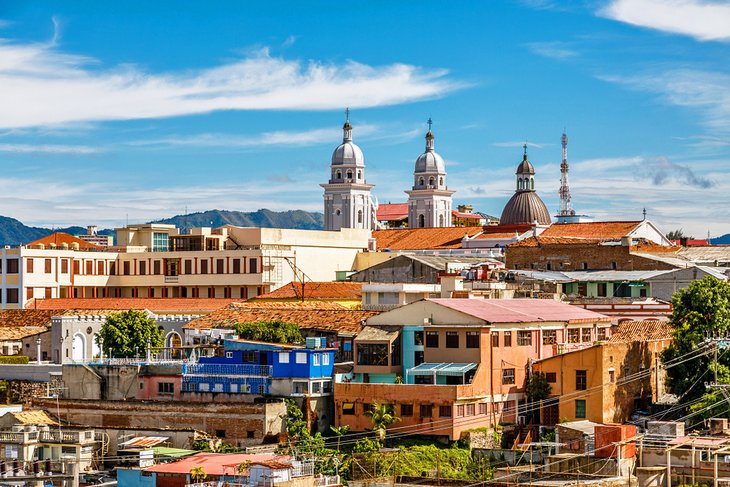CUBA, ITS GOLONDRINAS, AND OTHER VARIETIES OF ENDEMIC BIRDS OF THE ISLAND
It is said that in Cuba there are two types of Swallow. The Cuban blue swallow, which is a migratory bird, so it is not considered an endemic species, also called Cuban Martin and which is present from April to August, migrating to South America in winter. There is also the Cuban swallow, which is native to Aruba, the Netherlands Antilles, Cuba, and the United States.
In Cuba there are more than 300 species and subspecies of birds, the following standing out as endemic varieties: the tocororo, which is the National Bird; the parrot, in great demand for its imitation of the human voice; el catey, known as perico; the muleteer, a handsome inhabitant of the island’s thick forests; the banana Sijú and the loggerhead hawk, both diurnal birds of prey; the zunzuncito, considered the smallest bird in the world; the nightingale, with an extraordinary piping song; the goatherd, which stands out for its good trill and striking colors; and the letter cuba, one of the most beautiful winged specimens of the Cuban archipelago; the jabado carpenter, with a red bow on the male’s head; the cao, one of the Cuban black birds; fermina, a bird with highly localized endemism in muddy areas; the totí, a black bird that attacks the rice fields in large flocks; the tomeguín del pinar, very common in the island’s fields, and the Santo Tomás chicken, an endemic aquatic bird in the Zapata swamp.
https://youtu.be/vAfOya9FZZI
LAS GOLONDRINAS (VIDEOS)
The real woodpecker and the Cuban macaw are very interesting and unique, the first of them, considered in danger of extinction, and the second, disappeared since the last century.
There is a large group of birds that, although they are not endemic, nest in Cuban territory or have a wide Caribbean distribution, among them we can mention the flamingo, with long legs and a pinkish color; the yaguasa, appreciated for its meat; the mountain hawk, very common in Cuba; and the mockingbird, king of the winged songs for his sweet song.
The gorse, one of the smallest wild pigeons in the world; the querequeté, known for its habit of flying at dusk over the fields and coasts, and the kingfisher, a great fish eater, are also among the best known.
However, swallows, of another type, due to their emigrant nature, are very abundant in Cuba. And I am referring to the Cubans, who, imitating swallows, emigrate, although at any time of the year they return to visit their nest.
CUBA, SUS GOLONDRINAS Y OTRAS VARIEDADES DE AVES ENDEMICAS DE LA ISLA
Se dice que en Cuba hay dos tipos de Golondrina. La Golondrina azul cubana, que es un ave migratoria, por lo que no es considerada una especie endémica, también llamada Cuban Martin y que está presente de Abril hasta Agosto, migrando en invierno a sudamérica. También existe la golondrina cubana, que es nativa de Aruba, Antillas Neerlandesas, Cuba y Estados Unidos.
En Cuba hay más de 300 especies y subespecies de aves destacándose como variedades endémicas las siguientes: el tocororo, que es el Ave Nacional; la cotorra, muy solicitada por su imitación de la voz humana; el catey, conocido por perico; el arriero, lindo habitante de los bosques espesos de la isla; el sijú platanero y el gavilán caguarero, ambos rapaces diurnos; el zunzuncito, considerada el ave más pequeña del mundo; el ruiseñor, con un extraordinario canto aflautado; el cabrero, que resalta por su buen trino y llamativos colores; y la carta cuba, uno de los más bellos ejemplares alados del archipiélago cubano; el carpintero jabado, con una moña colorada en la cabeza del macho; el cao, uno de los pájaros negros cubanos; la fermina, ave con endemismo muy localizado en las zonas cenagosas; el totí, pájaro negro que ataca los arrozales en grandes bandadas; el tomeguín del pinar, muy común en los campos de la isla y la gallinuela de Santo Tomás, ave acuática endémica de la Ciénaga de Zapata.
https://youtu.be/pVN-f6lZ49w
LAS GOLONDRINAS Y OTRAS AVES DE CUBA (VIDEOS)
Son muy interesantes y únicos el carpintero real y el guacamayo cubano, el primero de ellos, considerado en peligro de extinción, y el segundo, desaparecido desde el siglo pasado.
Existe un numeroso grupo de aves que aunque no son endémicas, anidan en territorio cubano o tienen amplia distribución caribeña, entre ellos podemos citar el flamenco, de largas patas y color rosáceo; la yaguasa, apreciada por su carne; el gavilán de monte, muy común en Cuba; y el sinsonte, rey de los alados canoros por su dulce canto.
La tojosa, una de las palomas silvestres más pequeñas del mundo; el querequeté, conocido por su hábito de volar al atardecer sobre los campos y costas y el martín pescador, gran devorador de peces también están entre los más conocidos.
Sin embargo las golondrinas, de otro tipo, por su carácter emigrante, son bien abundantes en Cuba. Y me refiero a los cubanos, que imitando a las golondrinas, emigran, aunque en cualquier época del año regresan a visitar su nido.
Agencies/ MemoriasCubanas/ Carlos RodriguezB. / Internet Photos/ YouTube/ Arnoldo Varona/ www.TheCubanHistory.com
THE CUBAN HISTORY, HOLLYWOOD.



 CUBA, ITS GOLONDRINAS, and Other Varieties of Endemic Birds of the Island. * CUBA, SUS GOLONDRINAS, y otras Variedades de Aves Endémicas de la Isla. PHOTOS/VIDEOS.
CUBA, ITS GOLONDRINAS, and Other Varieties of Endemic Birds of the Island. * CUBA, SUS GOLONDRINAS, y otras Variedades de Aves Endémicas de la Isla. PHOTOS/VIDEOS.





